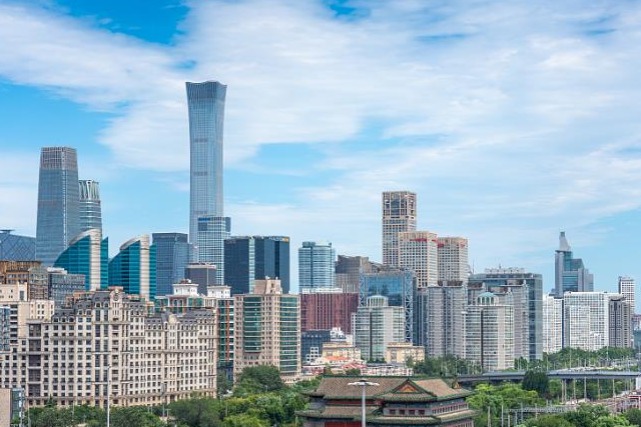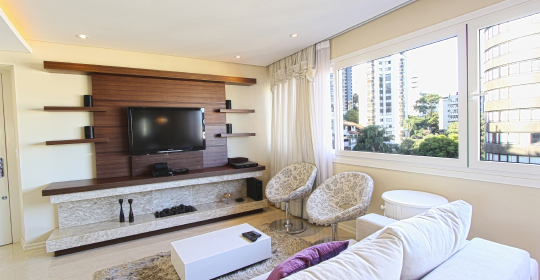
By Joan Torres Leave a comment Last updated on February 17, 2025

Guyana, Suriname and French Guyana, popularly known as ‘’the 3 Guyanas’’, are three countries located in the eastern shoulder of South America and probably, the least visited countries in the all the Americas.
Either you are overlanding across Latin America or just traveling here for a few weeks, it’s easy to combine the 3 countries in one single trip.
This guide will show you how to cross the 3 Guyanas (Guyana-Suriname-French Guyana) overland, from Georgetown to Cayenne.

In this Guyana travel guide, you will find:
our recommended travel insurance for Guyana
With its Backpacker plan, IATI Insurance is the best insurance for any kind of adventurous destination, like Guyana.
Introduction to travel in the Guyanas: Why are they called the 3 Guyanas?
The Guyana is a geographical area comprised of the Guiana Shield.
Politically-speaking, this area today refers to Guyana, Suriname and French Guyana but, theoretically, it also includes the Guayana region in eastern Venezuela and Amapá state in Brazil.
In fact, during colonial times, the Venezuelan Guyana was referred to as Spanish Guyana, while Amapá state as Portuguese Guyana.
Similarly, Guyana (the country) was known as British Guyana, and Suriname as Dutch Guyana.
French Guyana never got their independence and today, this tiny country is an overseas department and region of France, hence part of the European Union.
Canaima National Park is part of The Guyana
 The Guyanas is mostly dense forest, photo taken in South Guyana (British)
The Guyanas is mostly dense forest, photo taken in South Guyana (British)
How to get to the 3 Guyanas
Where to start from, Guyana or French Guyana?
From a logistical perspective, it really doesn’t make any difference but you should start from wherever is more convenient for your kind of trip.
I personally started from Georgetown (Guyana), and the only advantage I can think of is that I liked ending my trip in Cayenne (French Guyana), where I could find pretty amazing restaurants serving decent French food and wine, something which is hard to find in the other 2 Guyanas.
How to travel to the 3 Guyanas by land
Traveling to Guyana by land
From Venezuela: There’s no official border between both countries, not even roads, but only thick jungle.
Check our travel guide to Venezuela.
From Brazil: The border is open at Lethem, easily reached by public transportation from Boa Vista. If you are traveling in Venezuela, you should get to the southern city of Santa Elena de Uairén – there are direct buses from Caracas – and then cross into Brazil to Boa Vista.
The journey from from Lethem to Georgetown is a very long one, over 500km of mostly unpaved road, including a river crossing by ferry, difficult to do it in one go, so do stay somewhere in between, like the area of Rupunini or Iwokrama.
Traveling to Suriname by land
Suriname has a border with Brazil but there aren’t any roads, so you can only get in from either Guyana or French Guyana.
Traveling to French Guyana by land
Macapá, the city that lays on the Amazon delta is the main transportation hub to Saint-Georges, the border town from this part of French Guyana.
How to travel to the 3 Guyanas by flight
Before getting into the Guyanas, I was traveling in Trinidad and Tobago for a couple of days, from where I flew into Georgetown.
From Port of Spain (Trinidad and Tobago) there are daily inexpensive flights into Georgetown, so adding Trinidad and Tobago into your 3 Guyanas adventure is quite feasible, especially because from a cultural perspective, they are similar.
Traveling to Georgetown by flight
Georgetown has two international airports – Eugene F. Correia International Airport (OGL) and Cheddi Jagan International Airport (CJIA).
Besides Port of Spain (POS), common connections are Panama (PTY), Miami (MIA), New York City (JFK) and Bridgetown, Barbados (BGI).
Traveling to Cayenne by flight
Besides their daily flight to Paris (CDG) with Air France, the International Airport of Cayenne (CAY) barely has any connections, only to the French Caribbean islands of Martinique and Guadeloupe.
How to travel the 3 Guyanas overland: Georgetown-Paramaribo-Cayenne
our recommended travel insurance for Guyana
With its Backpacker plan, IATI Insurance is the best insurance for any kind of adventurous destination, like Venezuela.
The route Georgetown-Paramaribo-Cayenne
The distance between Georgetown and Paramaribo is 840 km.
Remember that the countries are not connected by road, but they are separated by a river without a bridge, so you can only cross by boat.
How to get from Georgetown to Paramaribo (Guyana to Suriname)
 The main cathedral in Paramaribo
The main cathedral in Paramaribo  Main market in Georgetown
Main market in Georgetown
Here are the steps you need to follow for traveling from Guyana to Suriname by land.
Step 1: Get your Suriname e-visa and complete the online immigration form
Suriname is the only country in the Guyanas that requires having a visa.
You can get your e-visa on this portal. It costs 58 USD.
The portal recommends applying 72 hours in advance, but I applied on the day before and got my e-visa instantly.
After getting your visa, you need to fill out the following online form and show the respective QR code upon arrival in Suriname.
The yellow fever certificate is also a requirement for entering Suriname
Step 2: Georgetown to Molson Creek
Molson Creek is the border town with Suriname, where you need to catch the ferry.
The journey takes 3 to 4 hours, depending on the type of vehicle.
You have two options:
1) Booking a shared taxi in advance
This has the added benefit that they will pick you up from your hotel and then, a second shared taxi will be waiting for you across the border to take you to Paramaribo.
For that, you should book it a couple of days in advance to secure your spot.
Pick up is between 4 am and 5 am and the journey takes about 3 hours. It costs 50 USD, including the second leg of the journey, from the border to Paramaribo.
Note that it doesn’t include the ferry ticket.
I can recommend a man named Rudolf, very easy-going, kind local guy from Georgetown. You can message him on WhatsApp: +592 641 6010
2) Going by local bus
The advantage of going by bus isn’t really the price difference but personally, I prefer going by public transportation, since it’s usually a great way to meet locals. Option 1 is just too easy.
Important: there’s only one daily ferry that goes across the river so, if you want to catch it, you’ll have to be at the station extra early, no later than 4 or 5 am.
The problem, however, is that the minivans depart from Stabroek market, one of the sketchiest areas in the city, and you’ll get there when it’s still dark.
Georgetown is well-known for its violent crime so, if possible, try to get there by taxi from your hotel, don’t walk alone around that area.
Alternatively, you could just show up in the middle of the day, and spend the night at the border town.
 Due to all the safety issues in Georgetown, Stabroek market in Georgetown features a massive surveillance screen
Due to all the safety issues in Georgetown, Stabroek market in Georgetown features a massive surveillance screen
Step 3: Immigration and ferry crossing
In Molson Creek, you’ll need to get in the ferry terminal, where you’ll go through immigration and purchase your ferry ticket, which costs 20 USD.
In my experience, the border was quite busy, but the whole process didn’t take more than 25 minutes.
 Guyana / Suriname border
Guyana / Suriname border
After getting your passport stamped, all you’ll have to do is wait for the ferry. They say it can depart at any time between 9:30 am and 1 pm. In my case, it departed at 11 am.
The journey by ferry takes 1 hour and 30 minutes, it’s incredibly slow.
 The ferry that takes you from Guyana to Suriname
The ferry that takes you from Guyana to Suriname
Step 4: Suriname immigration and South Drain to Paramaribo
As soon as you get across the river, leave the boat quickly to skip the immigration line.
Upon leaving the customs, you’ll be approached by several shared taxi drivers looking for passengers to Paramaribo.
The journey shouldn’t cost more than 20-25 USD.
From the border to Paramaribo is another 3 to 4 hours.
How to get from Paramaribo to Cayenne (Suriname to French Guyana)
Here are the steps you need to follow for traveling from Suriname to French Guyana overland.
Step 1: Complete your online immigration form
Similarly to what you did when entering Suriname, you will also need to fill out the same online form for exiting the country. Here’s the link.
Step 2: Paramaribo to Albina
For traveling to French Guyana, you can easily take a local shared taxi to the border town of Albina.
The taxi terminal is located right here.
The journey takes 2 hours and costs 20 USD. Too easy.
Step 3: Look for the actual customs
 The boats that take you to French Guyana, actual European Union
The boats that take you to French Guyana, actual European Union
This could be confusing for some.
The local shared taxi will drop you in a very busy location by the river shore, an area packed with small boats that take you across the river.
Those boats are taking people into French Guyana illegally, but I never managed to understand why there isn’t any control over it.
You will certainly get approached by some of their captains but remember that first, you’ll need to get your exit stamp at the actual customs, located 500 meters away from where you probably are. Right here.
After getting your exit stamp, it doesn’t matter whether you take the official boat or go back to the ‘’illegal’’ harbour.
In fact, the guy who stamped my passport encouraged me to take one of the illegal boats, since it’s way faster, but he told me to make sure I go through French immigration.
I went back to initial location and, when I got on one of those boats, the guy told me: do you want to be dropped at the French customs?
I was the only person who actually got off at the customs, the rest entered French Guyana from somewhere else.
 This is what you find upon arriving in French Guyana
This is what you find upon arriving in French Guyana
Step 4: Saint-Laurent-du-Maroni to Cayenne
The French have invested very little in their South American colony/enclave, especially when it comes to public transportation.
Moreover, that is a little transited border crossing, so chances of not seeing any driver are pretty high.
You have 2 options:
- Walk to the center of Saint-Laurent-du-Maroni and take the 1 pm bus to Cayenne. There are 2 daily buses, one at 6 am and another at 1 pm.
- At the customs, you’ll see a few boat owners. If you can’t see any taxi, ask them to call a shared taxi for you.
 Cayenne. the capital of French Guyana
Cayenne. the capital of French Guyana
In my case, I decided to spent the night in Saint-Laurent-du-Maroni, which I can strongly recommend.
The town is packed with street vendors from probably Suriname, a nice market and the Transportation Camp of the prisoners going to the Salvation Islands (remember the book/movie Papillon?). It’s hard to believe that town belongs to the EU.
On the next day, around 10 am, I went to the bus station only to find out that I had already missed the first bus (it was 10 am) so I went back to the customs, where I managed to find a shared taxi thanks to one of the boat men.
You can either try your luck there or just call this number: +594 694 21 18 28 (Nell)
The journey takes 3 hours by car and it costs 40 USD. French prices.
More travel information
In my Travel Resources Page you can find the list of all the sites and services I use to book hotels, tours, travel insurance and more.
More travel guides from the Americas

Източник за тази статия
Наши спонсори са:
Български трактори на добри цени при изключително качество






